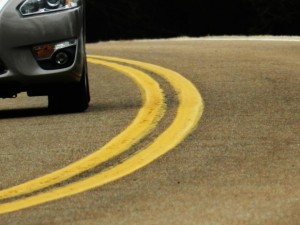In Connecticut, the rate of fatalities from wrong way crashes is higher than the national average. Connecticut Department of Transportation indicates wrong-way accidents accounted for nine percent of deaths in motor vehicle accidents during a time period when the national average rate of deaths due to drivers traveling in the wrong direction was 6.4 percent.
With so many wrong-way car accidents occurring in Fairfield, CT, it is imperative for motorists to understand causes of wrong-way accidents. Connecticut is taking steps to try to address these crash causes and to make the roads safer.
Causes of Wrong-Way Accidents in Connecticut
Wrong-way accident causes include drunk or impaired drivers; drivers who are too old to continue to operate vehicles safely; and confusing or poor road designs.
Connecticut has a program called the 4 E's program which aims to tackle all of these causes of wrong-way driving. The E's stand for engineering, enforcement, education, and emergency medical services.
Engineering means trying to make roads safer, and to make sure road designs decrease risks of wrong-way accidents. Lowering signs indicating drivers are going the wrong way, and lowering signs saying "Do Not Enter," can make a difference. NBC reports it costs around $200 to $300 to put up a lower "Wrong Way" sign, and these lower signs may be far more visible at night when the majority of wrong-way crashes occur. Impaired drivers also tend to have heads bent down, so they are looking lower and will be more likely to see road signs which are located lower.
Enforcement means better enforcing laws against impaired driving. National Transportation Safety Board warns 60 percent of situations in which drivers get onto highways going the wrong way involve a driver whose blood alcohol concentration has exceeded the legal limit.
Education is primarily focused on helping seniors, who are at greater risk of wrong-way accidents. Seniors tend to go in the wrong direction due to confusion and mental acuity declines due to aging, rather than due to alcohol use. Seniors 80 and over are 30 times as likely as younger seniors to get into a wrong-way accident.
Finally, emergency medical services refers to the development of an effective plan aimed at helping emergency personnel to more quickly be able to respond to sites of wrong-way crashes to provide potentially life-saving medical care.
From 2009 to 2011, five people died and 38 people were killed on average each year when a wrong-way crash occurred. Wrong way accidents were defined to include situations where motorists entered interstate highways going in the opposite direction of the traffic which was oncoming. When wrong-way accidents cause injury, the damages are likely to be serious. Wrong-way crashes are almost always head-on crashes and when two cars directly strike each other from the front, the force and momentum of the collision is multiplied.
Hopefully, understanding causes of wrong-way crashes will help drivers to make better and more informed choices. Connecticut's efforts to make roads safer and to provide more education and enforcement may also be beneficial in reducing death rates.

